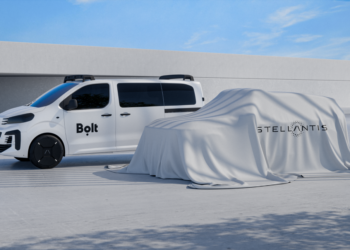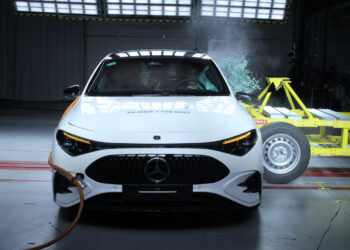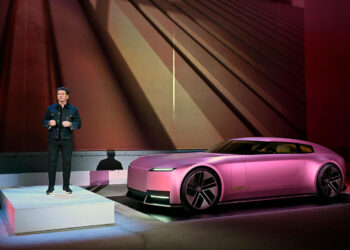In what could only be described as an industrial earthquake, the European commercial automotive sector faces an unprecedented collapse. With Stellantis CEO Carlos Tavares abruptly exiting the driver’s seat, Volkswagen slashing its operations in Germany, and China threatening to counterattack the European Union’s EV tariffs with a hybrid car revolution, Europe’s auto giants are in a perilous state. This article dives deep into the layers of this ongoing crisis, exposing the vulnerabilities of Europe’s automotive industry while exploring how global forces—especially China—are reshaping the game with ruthless efficiency.
I. The Stellantis Shockwave: Carlos Tavares’ Exit and a Stumbling Giant
A CEO Exodus Amid Chaos
When Carlos Tavares, the charismatic yet polarizing CEO of Stellantis, announced his sudden departure, it sent shockwaves through the industry. Under Tavares’ leadership, Stellantis—born out of the Fiat Chrysler and PSA merger—was lauded for its aggressive cost-cutting strategies and bold electrification plans. However, insiders claim that Tavares’ departure was less a retirement and more a resignation of defeat amid mounting internal turmoil and strategic gridlock.
The Structural Weaknesses of Stellantis
The cracks in Stellantis’ foundation are glaring. Despite its ambitious EV roadmap, the company remains over-reliant on legacy markets where demand for internal combustion engine (ICE) vehicles is dwindling. Its fragmented brand portfolio—ranging from Peugeot and Citroën to Chrysler and Jeep—is struggling to adapt to rapidly evolving consumer preferences.
A Domino Effect Across Europe
The repercussions of Stellantis’ instability extend far beyond its borders. Suppliers, dealerships, and workers dependent on the automotive giant are bracing for a long winter, with thousands of jobs already on the chopping block. Analysts fear that Stellantis’ woes could catalyze a domino effect, further destabilizing Europe’s fragile industrial ecosystem.
II. Volkswagen’s German Retreat: A Crisis of Confidence
Cutting Costs to Survive
Germany’s automotive powerhouse Volkswagen is grappling with its own demons. The company has announced severe cost-cutting measures, citing declining profitability and fierce competition in the EV sector. These cuts include the downsizing of factories, halting certain production lines, and scaling back its workforce—a move that has provoked outrage from German labor unions.
The EV Gamble Gone Wrong
Volkswagen’s aggressive push toward EV production was supposed to secure its future. Instead, it has left the company exposed to volatile supply chains, skyrocketing raw material prices, and inconsistent consumer demand for EVs. While Tesla continues to dominate the EV market, Volkswagen’s offerings have struggled to capture similar enthusiasm among buyers.
Germany’s Industrial Backbone at Risk
Volkswagen’s troubles strike at the heart of Germany’s identity as an industrial powerhouse. If Volkswagen—the crown jewel of German manufacturing—falters, the ripple effects could devastate the broader economy. Already, smaller auto manufacturers and parts suppliers are reporting declining orders, hinting at an impending recession in Europe’s largest economy.
III. The Chinese Threat: Hybrid Cars as a Weapon of Economic Warfare
EU Tariffs and China’s Counterpunch
In a bid to protect its domestic auto industry, the European Union has imposed tariffs on Chinese EV imports. However, Beijing has responded with a counteroffensive strategy: flooding global markets with competitively priced hybrid vehicles. Unlike EVs, hybrids are less reliant on expensive battery technology, allowing Chinese manufacturers to undercut European competitors on price without sacrificing profitability.
China’s Vertical Integration Advantage
China’s dominance in raw materials and components further strengthens its position. Chinese automakers not only build the cars but also control the production of batteries, semiconductors, and other critical parts. This vertical integration allows them to sidestep supply chain disruptions and maintain a significant cost advantage over their European rivals.
European Manufacturers Falling Behind
European automakers, in contrast, are struggling to adapt. Their reliance on external suppliers for critical components has left them vulnerable to disruptions, while high labor and energy costs continue to erode their competitiveness. The rise of Chinese hybrids could deal a fatal blow to European automakers’ already faltering EV ambitions.
IV. The Bigger Picture: A Perfect Storm of Challenges
The Green Transition’s Unintended Consequences
Europe’s aggressive push toward electrification—while well-intentioned—has inadvertently accelerated its automotive decline. By focusing almost exclusively on EVs, European automakers have neglected other technologies, such as hybrids and hydrogen-powered vehicles, where competitors like China and Japan have made significant strides.
Geopolitical Pressures
Geopolitical tensions are adding fuel to the fire. The EU’s strained relations with China and Russia have disrupted trade flows and driven up energy costs, further squeezing the margins of European automakers. Meanwhile, the U.S.’s Inflation Reduction Act is luring investment away from Europe, as automakers flock to America to take advantage of generous subsidies and tax breaks.
Consumer Behavior and Market Dynamics
Consumers, too, are reshaping the market. Rising inflation and economic uncertainty have dampened demand for new cars, especially premium EVs. Many buyers are opting for affordable hybrids or holding onto their existing vehicles longer, exacerbating the woes of Europe’s auto industry.
V. What Lies Ahead: Can Europe Avoid an Automotive Apocalypse?
Reimagining the Industry
For Europe’s automotive sector to survive, it must undergo a radical transformation. This includes diversifying beyond EVs to embrace a broader range of technologies, investing in domestic component manufacturing, and forging stronger alliances to compete with global giants like Tesla and BYD.
Policy Intervention
Governments must also step up. Strategic investments in infrastructure, subsidies for R&D, and policies to protect jobs are essential to stabilizing the industry. Without decisive action, Europe risks ceding its automotive crown to China and the U.S.
The Role of Leadership
Finally, leadership will be key. With Carlos Tavares out and Volkswagen in disarray, Europe’s auto giants need visionary leaders who can navigate these turbulent waters and steer their companies toward a sustainable future.
Conclusion: The Clock Is Ticking
The collapse of Europe’s commercial automotive sector is not a distant threat—it is happening now. Stellantis and Volkswagen are crumbling under the weight of their challenges, while China’s calculated counterattack threatens to reshape the global auto market. For Europe, the stakes could not be higher. Without bold action and strategic foresight, the continent that gave birth to the automobile could find itself relegated to the passenger seat of the global industry it once dominated.










